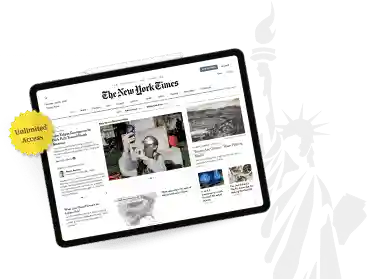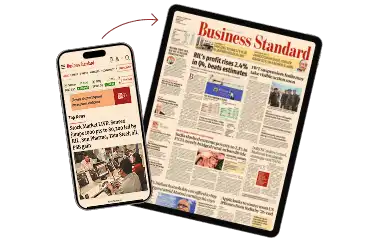A History of India Through 75 Objects
Author: Sudeshna Guha
Publisher: Hachette India
Pages: xviii + 669
Price: Rs 1,299
A History of India through 75 Objects is history told through a selection of objects from prehistoric times to modern-day India. As the author, Sudeshna Guha, tells us in the introduction, object-driven history books have become commonplace since the publication in 2011 of A History of the World in 100 Objects by the British Museum. It also appears to have inspired the present volume.
The 75 essays cover vast ground — the Ajanta frescoes, the Bhimbetka cave paintings, the Dancing Girl and the Jade Necklace of Mohenjodaro, the Ashokan Pillar of Allahabad, and the Iron Pillar of Mehrauli, among others. The author not only makes use of each of these objects to throw light on the history of their respective historical periods, but also dwells on the fascinating histories of these objects themselves.
A prime example is the “Dancing Girl” of Mohenjodaro in present-day Pakistan, found during excavations in 1926-27. That nomenclature, conferred in the excavation report itself, has stuck, and was reinforced when John Marshall, head of the Archaeological Survey of India at the time, wrote that the 10.8-inch figurine “gives a vivid impression of the young aboriginal nautch girl, her hand on hip in half-impudent posture, and legs slightly forward as she beats time to the music with her feet”. Marshall’s impressions, Ms Guha observes tartly, were decidedly subjective, and appear to “convey the British obsession with the Indian nautch (dance)”.
The figurine, which came to be part of India’s share of Indus Valley Civilisation artefacts after Partition, was the subject of an absurd Pakistan-India tug of war of sorts, though mercifully not between governments. In 2016, a Pakistani barrister argued in court that since the figurine was displayed in the Lahore Museum after it was excavated, it rightfully belonged in Pakistan. That same year, a report in the Indian press claimed that the figurine depicted the goddess Parvati.
Ms Guha also focuses on an aspect of Partition of India that is little discussed— the loss of heritage by the two successor nations. Pakistan lost a multitude of Islamic monuments, while India lost the territories that were home to the Indus Civilisation, and the classical Buddhist art of Gandhara and Taxila, a reputed seat of learning in ancient India. Tragically, but perhaps inevitably in the wake of Partition, select artefacts were physically dismembered to ensure an equal share for the two countries. As a result, a good-sized jade necklace found at Mohenjodaro was divided into two smaller, less impressive ones.
“The logic of destroying necklaces of inestimable archaeological and historical value defy all norms of curatorial practice…the policy of partitioning and dividing antiquities illustrates the fraught politics of heritage-making which archaeological discoveries often precipitate,” writes Ms Guha. More than 14,000 Indus art objects originally stored or displayed at museums in Harappa, Mohenjodaro, Lahore and Karachi were divided, “so that India could have a representative collection.”
Referring to the tendency of countries to take pride in their museums and the art objects that are on display in them, the author asks, more than once, what right “nations have to create national heritage through antiquities which predate them”. She adds that only by “engaging with such questions with an open mind can we effectively examine the ethics of heritage-making that nationalises a past bereft of nation states.”
A significant piece of historical trivia that Ms Guha dwells on is that the Ashokan Pillar at Allahabad (now renamed Prayagraj) features inscriptions from several different eras and in different languages — Ashoka’s edicts in Prakrit, the Gupta emperor Samudragupta’s royal eulogy in Sanskrit, graffiti from the reign of Firuz Shah Tughlaq (probably in Persian), and the genealogical record of the Mughal emperor Jahangir in Persian.
The author also focuses on the looting of antiquities and the destruction of archaeological sites, often by art scholars (one of whom she names) with the connivance of well-known art dealers and “elite museums of the West”. Looting tends to distort scholarship because, as she explains, it “destroys contextual information on which historical and archaeological inferences depend”. Art crime, she points out, is the third- or fourth-highest-grossing criminal enterprise. The statistics cited by Ms Guha, though outdated, are sobering: In 1999, the United Nations estimated the value of the illegal antiquities trade at $7.8 billion; in 2008, scholars estimated that 98 per cent of the Buddha statues at Angkor Wat in Cambodia were gone; and in 2013, more than 220,000 tombs were looted worldwide.
Contrary to the images the word “history” conjures up, Ms Guha also picks a number of “objects” from post-independence India — the Life Insurance Corporation logo, the Amul Girl billboards (both created by teams led by ad man Sylvester daCunha, 10 years apart), the Ambassador car, electronic voting machines, and the iconic Mother India movie poster. The choice is eclectic, but by the end of this door-stopper of a book we are none the wiser about what yardsticks led her to it.
Ms Guha’s prose is turgid and abstruse, often archaic, and sometimes grammatically incorrect; the sentences involved and long-winded, when simpler language would have appealed to the general reader without necessarily compromising on scholarly rigour. It is the one disappointing feature of an impeccably researched and otherwise fascinating book.










)

